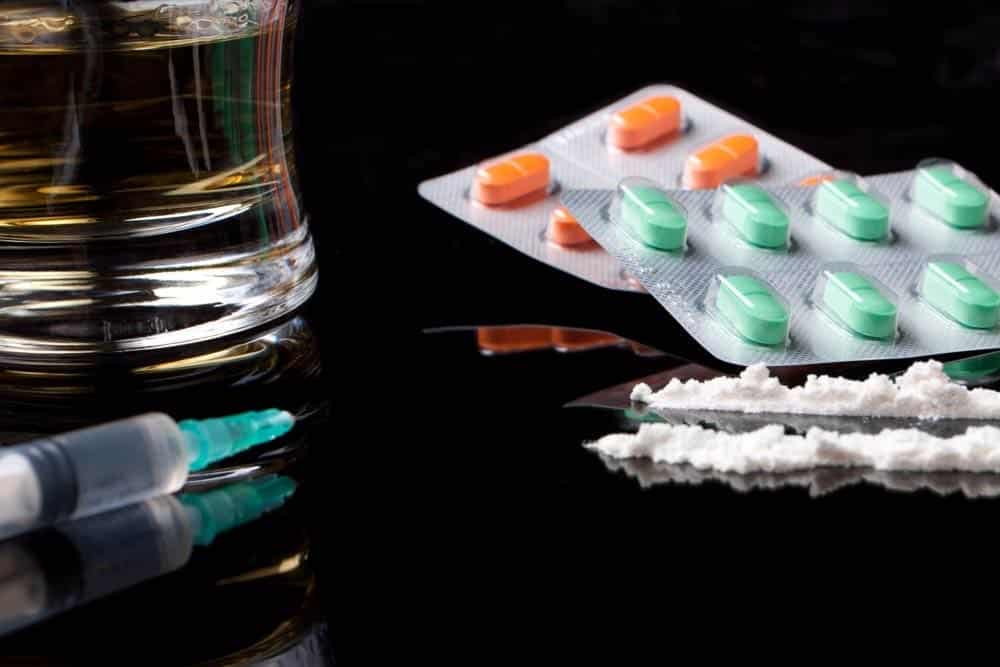Crack cocaine is the solid or “rock” form of cocaine. Crack is made by cooking hydrochloride salt (also known as cocaine) with baking soda or ammonia and water and then pressing it into a solid shape.
Crack has a half-life of one hour[1] and is detectable for 1-3 days in your urine. The length of time crack stays in your urine depends on several factors, including dose, duration of use, and organ health.
What is Crack?
Crack cocaine, also known as crack or rock, is a potent stimulant that is smoked for its euphoria-inducing properties. Crack is made from cocaine that has been baked into rocks or crystals which are then smoked[2].
The pleasurable effects of smoking crack are a direct result of the drug increasing the amount of dopamine, a neurotransmitter, in the brain[3]. Crack has a short half-life of only 15 minutes and is considered highly addictive. Crack is classified as a schedule II drug in the United States under the Controlled Substances Act.
What is the Difference Between Crack and Cocaine?
Crack is a form of cocaine that has been processed with ammonia or baking soda and water. The mixture is then formed into rocks or crystals that can be smoked. Unlike crack, cocaine is typically taken by snorting it or through injection.
Cocaine and crack both enter the bloodstream quickly[4], but the effects of crack are felt as quickly as they are when cocaine is injected. Research has shown that crack is potentially more addictive than powdered cocaine.
How Long Does Crack Stay in Your Urine?
Crack has a half-life of one hour and can be detected in urine for 1-3 days after it was last smoked. Heavier use of the drug can potentially increase this window by several days.
A urine test will screen for the presence of crack metabolites, which are the active compounds leftover in your system after crack metabolism.
Why is Urine Used to Test for Crack?
Urine analysis is more cost-effective than other types of testing and the most common means for detecting the presence of crack in the system. After a urine sample is given it is taken to a lab and screened for crack and crack metabolites.
Urine samples are typically taken at a doctor’s office, at work, at a hospital, or at a lab. In some cases, you may be able to collect your urine sample at home.
Factors That Can Affect How Long Crack Stays in Urine
There are several factors that can affect how long crack – as well as other substances– is detectable in urine:
Dosage and Frequency of Use
Both the amount of crack used and the frequency of use can have an effect on how long the drug stays in your urine. If crack is used frequently and in large amounts it is more likely to build up in the body. Similarly, if crack is smoked infrequently and in smaller amounts it may not be detectable in your urine after a day or two.
Length of Use
Your urine may test positive for crack use for up to a week after it was last used if you have been taking the drug for a long period of time. If you have been using crack for a short amount of time it will exit your system faster. Crack and crack metabolites can build up in the body and require more time to be completely flushed from the body after prolonged use.
Liver Function
Crack is largely metabolized in the liver, where it is broken down into active metabolites. If your liver health is compromised, it won’t be able to break down crack as efficiently. As a result, crack may remain detectable in urine for up to a week or longer.
Food and Water Intake
If crack is taken with food, it can slow down the metabolism of the drug, which means crack can remain detectable in urine for a longer period of time. On the other hand, increased water intake causes crack to metabolize more efficiently so that it is excreted more quickly from the body.
General Metabolism
The faster your metabolism, the more likely it is that crack will leave your body within 1-4 days. If you have a slow metabolism, this could cause your urine to test positive for crack beyond four days.
What Other Tests Can be Used to Detect Crack?
Urine analysis is just one method that can be used to screen for crack.
Blood Test
Blood tests are administered by drawing blood from a vein. The blood sample is then tested for the presence of crack or crack metabolites in a lab. Due to cost, blood tests are not used as regularly as urine tests but are considered more accurate.
Crack can be detected in a blood sample for 2-12 hours after it was last used.
Hair Follicle Test
A hair follicle test involves removing a small patch of hair as close to the scalp as possible for analysis. If there is insufficient hair on the head, hair can be taken from any unshaven part of the body.
Crack use can be detected in hair follicles for up to 90 days, although hair follicles may continue to show evidence of use for several years.
Saliva Test
For a saliva test, a swab is placed against your cheek so that it can absorb oral fluids. The swab is then tested for the presence of crack. Saliva tests are not conducted as regularly, as pH levels in the mouth can affect the validity of the analysis.
Crack is detectable in saliva for up to 24 hours after it was last used.














